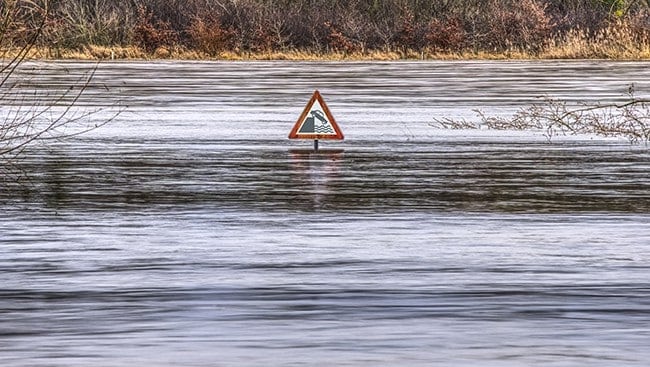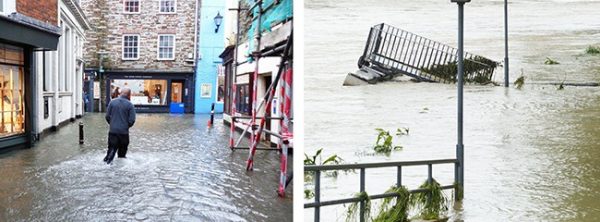
Preparation in the event of a flood
Posted on 7th March 2018 by Phil Ainley
Risk Management is offered by our partners at Caunce O’Hara Insurance Brokers Limited. To find out more please visit www.cohibl.com or call 0333 321 1403.
During August and September 2017, Hurricane Harvey swept in through the Caribbean and the east coast of Latin America and eventually onto land in Texas, creating mayhem and destruction along the way and leaving thousands without homes and businesses.
Sadly, some 82 people lost their lives as Harvey became the joint-costliest tropical cyclone on record (tied with Hurricane Katrina from 2005), causing over $125 billion of damage.
Two feet of rain fell in the first 24 hours, with flooding forcing 39,000 people to flee their homes and move into shelters. At its peak one-third of the city of Houston was underwater.
It is now widely recognised that previously 1 in 75-year flood occurrences are now as often as 1 in 15 years or even 1 in 5-year occurrences.
Headlines such as these now appear more common than ever, with reports of flash flood chaos across Northern England seemingly occurring every year. It was as recent as December 2015 that the UK was faced with similar destruction as gales and heavy rain swept across large parts of the UK, causing catastrophic flooding in Cumbria, Lancashire and parts of southern Scotland.
Help is at hand
As scary as this can be, it is reassuring to know help is at hand if we should ever need it. Although the UK’s Environment Agency is at full stretch and budgets are tight, they are fighting to help threatened communities. By the same token insurance companies are also quick to respond when disaster strikes, with teams of loss adjusters and surveyors on the flooded ground, often working in boats, almost from day one.
Sadly, nothing can prepare you for such catastrophic events and nor can you control them, but our resident Risk Manager, Steve Haines, who has flood mapped and surveyed many areas affected by these terrible catastrophes over many years, offers support by way of business continuity planning to help protect you against flood risk and reduce the impact on your businesses should the worst ever happen.
There are three key areas of advice you can follow to help your business in the event of flooding:
PREPARE
• Assess risk to your property using flood map data
• Prepare and review as necessary a formal business continuity plan identifying actions that will mitigate property loss. For example, strategic siting of business-critical equipment and back up faculties.
• Delegate responsibilities to a team and make them accountable.
EMERGENCY
Initiate your business continuity plan. This will have the predicted actions necessary in the event of flooding. Raise the alarm with emergency responders and follow their instructions. Life safety is essential.
Engage all resources to reduce loss and familiarise your team with emergency procedures such as how to safely isolate electrical supplies and other services. Know how to protect stock and equipment by relocating to safer areas and if the property is in a known flood area pre-prepare with flood prevention measures such as sand bags and barriers.
Communicate your status to all interested parties, customers, suppliers, employees etc, and try to manage the situation as normally as possible without causing alarm.
RECOVERY
Liaise with your insurance broker and provide accurate information and estimates of losses. Utilise all resources to restore business functions as quickly as possible. Reassure customers that normal business operations can resume accordingly. Review the business continuity plan considering any short comings.

Related Articles:
Business Interruption and Flooding
Author Steve Haines, Risk Manager at Caunce O’Hara Insurance Brokers Ltd
Useful Links

Employers' Liability Insurance
A legal requirement for anyone employing staff. Protects your business in-case an employee is injured at work.

Commercial Crime Cover
Protection for losses from, fraud, dishonesty, theft, bribery, forgery, and loss investigations.

Directors and Officers Insurance
Protects your assets in the event of a claim. You may be held personally responsible for your business action and will have unlimited personal liability.
